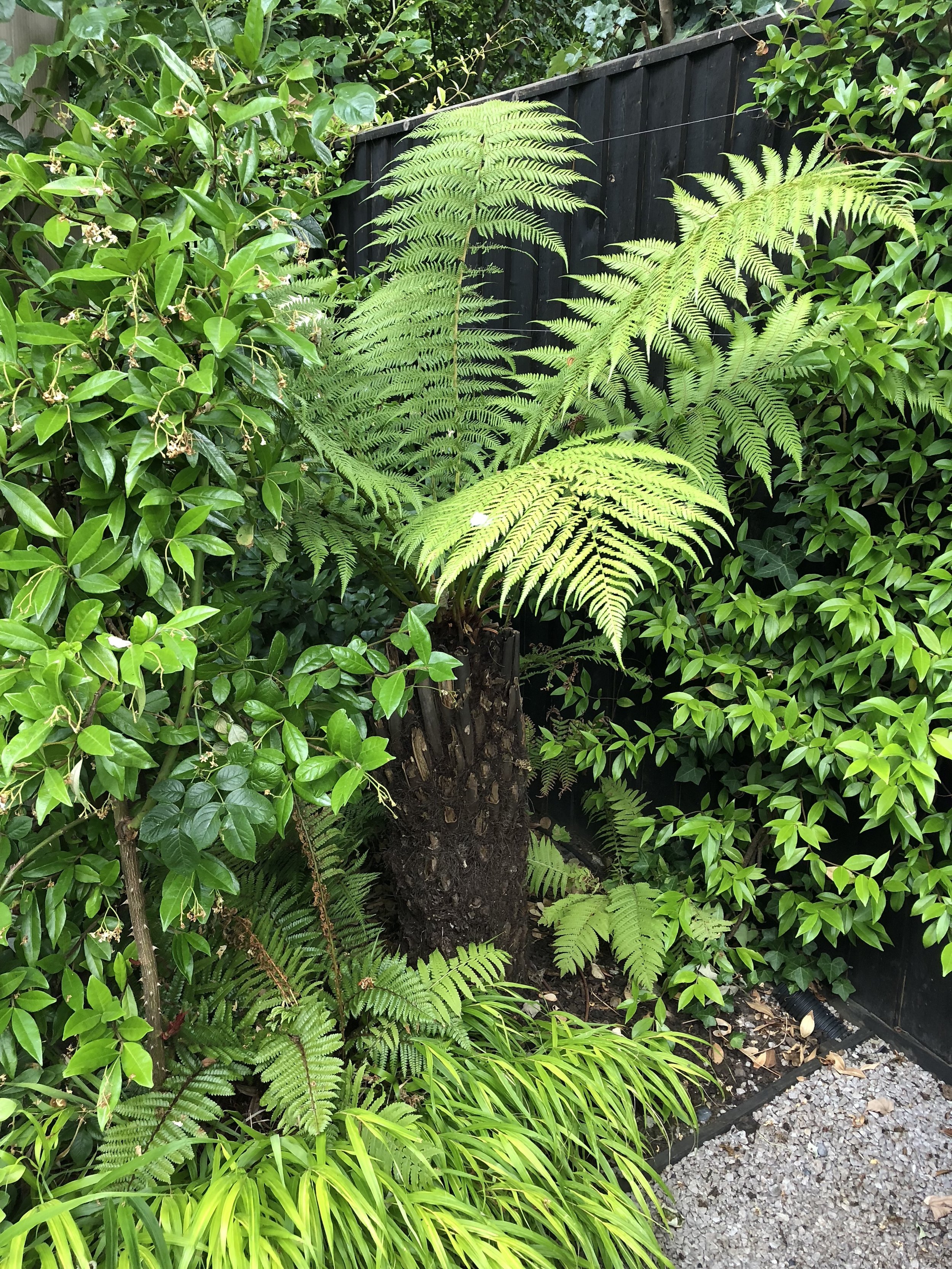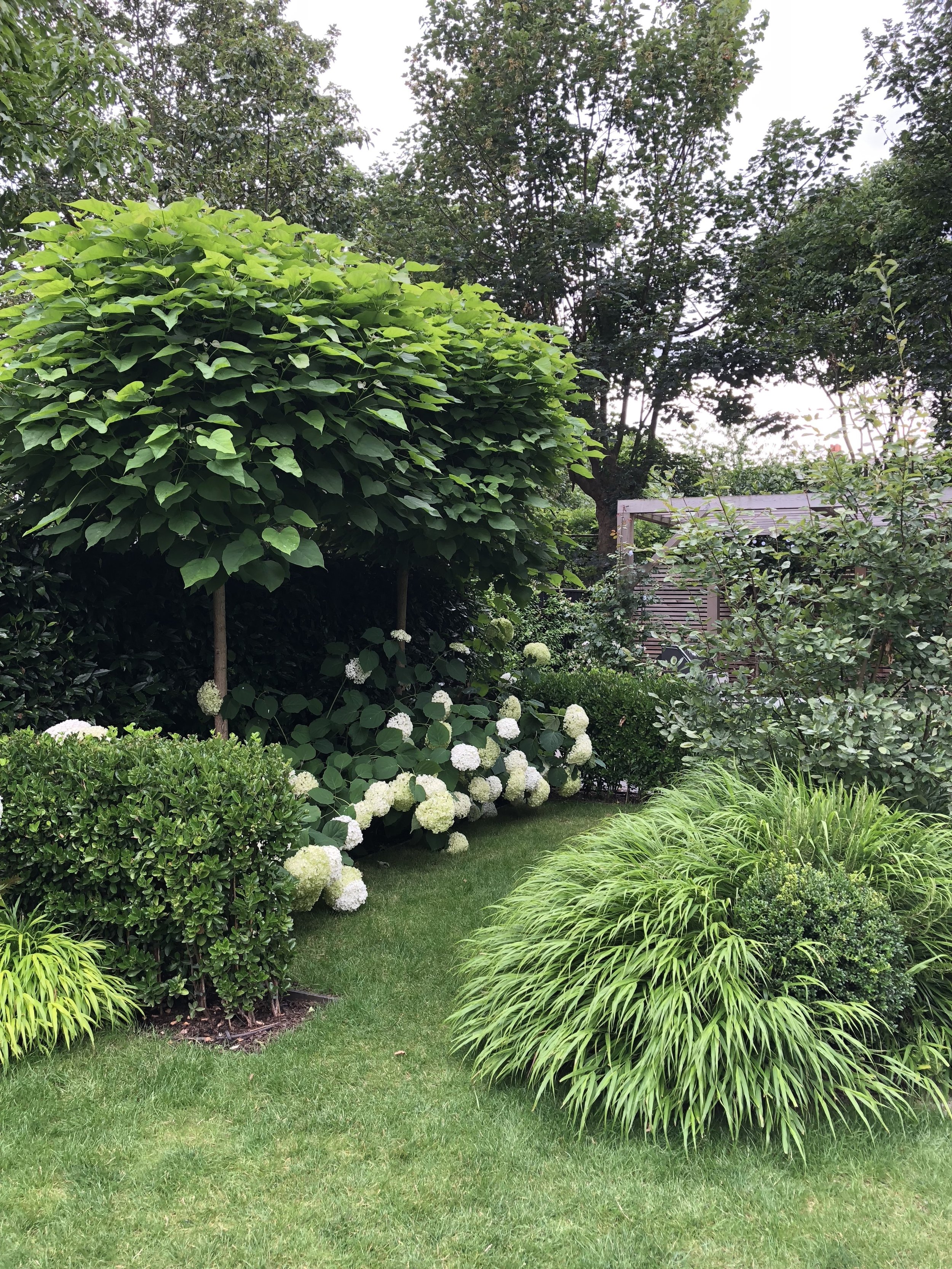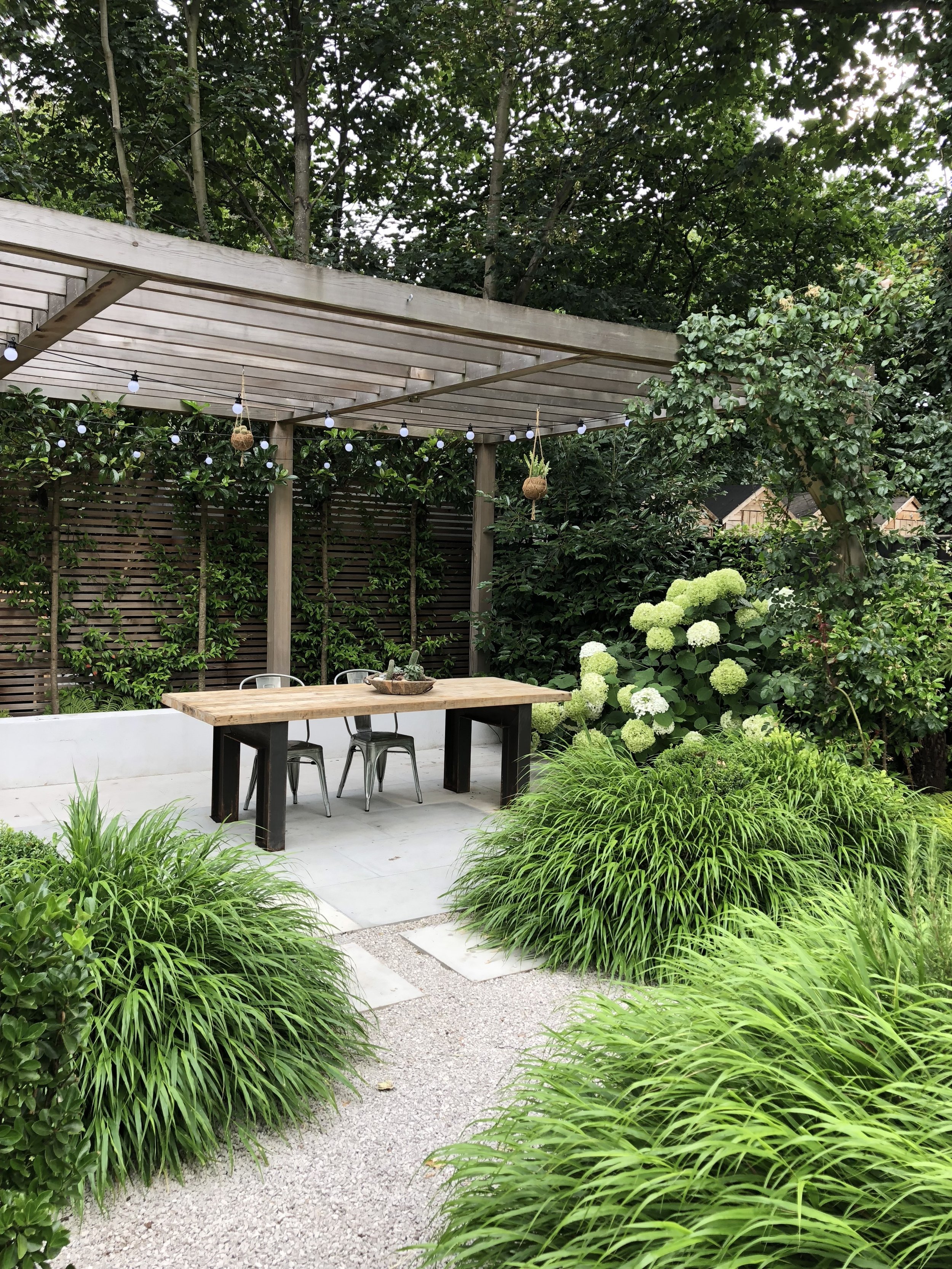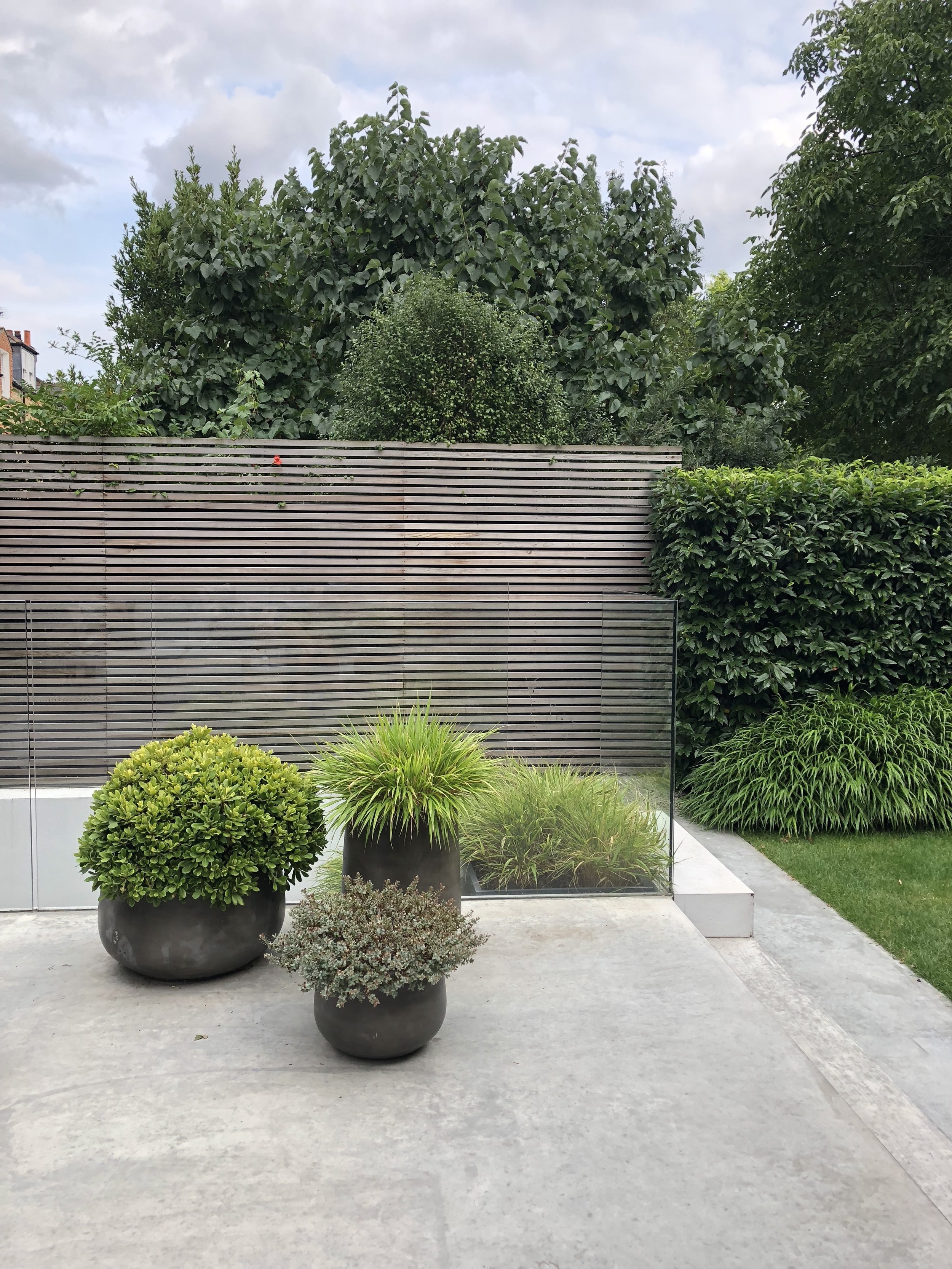GARDEN TOUR
Sommer Pyne
As promised here is the follow up blog to our Instagram Live garden tour last week. A big thank you to those of you that were able to join us. If you missed the tour head over to my IGTV to check it out now.
I was joined by our Garden Designer Shelley Hugh-Jones who shared her wealth of knowledge and answered all your burning questions. Shelley has kindly written a blog post below sharing some of her insider tips, explaining why it's important to get a garden designer, plus the plant list with all those tricky plant names.
Why use a garden designer?
An experienced garden designer will have the creativity and perspective to assess the existing garden and come up with fresh ideas, identifying solutions that run in line with the available budget.
They can help with everything from planning the entire garden, from solving privacy problems, to selecting the most suitable plants for beds and borders, and in doing so avoiding potential costly mistakes. Their expertise in planning an outdoor space will also maximize the potential of your garden and add value to your property.
As well as plant knowledge, a garden designer also should have specialist knowledge, regarding local guidelines and building regulations regarding driveways, fence heights, tree protection orders, conservation areas, levels and slopes, hard landscaping etc.
They can take responsibility for all the design work, specifications and appointment of contractors, as well as act on your behalf in any discussions regarding the actual build.
When to get garden designer involved:
Do this as early as possible. If you are working with an architect or builder, a collaborative approach is key. Decisions regarding the space planning are made together so that both inside and outside are unified.
Practical issues such as where the outdoor tap will be situated, gas if running a gas pipe rather than using bottled gas, lighting cables and light fittings on the house wall all effect the position of feeds from inside the house etc. The electrician also needs to leave enough capacity on the system for enough circuits, two at least, for the garden. Feeds for outdoor speakers also need to be installed early on.
Conduits under patios etc need to be left for electrical cables and irrigation feeds.
Briefing a garden designer
Give them as much info as possible regarding your likes and dislikes.
Show them around your downstairs space or show plans of how things will look inside. Discuss interior colours, flooring, work surfaces etc.
Introduce them to your builder/architect/etc. as early as possible.
Considerations when planning a garden
How you want to use the garden, dining, cooking, relaxed seating, play areas- trampoline, climbing frames, football area, etc real grass/ artificial?
Privacy issues.
Likes and dislikes in terms of materials and plants if you have them.
The direction the garden faces, soil type, whether you are in a conservation area as there are planning rules within these areas.
Budget
Draw up a list of requirements and how you want to use your garden.
First of all use your existing internal décor style/colours etc as a starting point, (specifically of the room that adjoins the garden) in order to create a good flow from inside to out, these two spaces should work together. Look at the flooring material or colour and repeat this outside, kitchen surfaces, chrome or brass hardware etc. All this can be reflected in the garden.
The façade of the house also is very important, type of brick, render, colour etc and the position of doors onto the garden.
Divide up the space to make the garden appear larger even if it is a small garden this can be done to a lesser extent. Use planting or other focal points along the garden length so that your eyes track from side to side rather than just focusing on the back border.
Lay paving widthways to make it appear wider and lengthways to appear longer.
Evergreen structure in a garden is key and the first thing to be considered.
Planting can divide up the space, add structure, act as focal points, provide privacy, add colour, texture and form plus year round interest.
Very important to use plants that will thrive in the conditions specific to your garden, sunny, shady, soil quality, clay, sandy etc.
Consider the eventual height and spread as the plants mature also important to consider and how the garden will look in years to come.
Speak to your neighbours before the work starts as boundary issues especially in London often rear their head.
How I work with clients:
After an initial visit and discussion of the brief I draw up an initial proposal and outline of ideas plus design costs and details of how the design process works.
I create a Pinterest board for the project to which all parties can contribute. It’s a good way of exchanging ideas and getting inspiration.
The garden is surveyed.
I draw up to scale 2-3 ideas for the layout and an outline of the planting and after discussion with the client a lead design is chosen and a detailed building specification is prepared. Landscapers can then quote on the same design and specification making all the quotes comparable. .
Regular site meetings with the landscaper and client while the build is in progress take place which allows for discussion regarding and any decisions or changes that have to be made that all are in agreement with.
The planting plan and plant lists are discussed with the client and ordered ready for planting at the end of the construction period.
THE PLANT LIST
BULBS
Allium 'Mont Blanc'
CLIMBERS
Trachelospermum jasminoides
FERNS
Asplenium scolopendrium
Matteuccia struthiopteris
Polystichum polyblepharum
Polystichum setiferum Divisilobum Group 'Herrenhausen'
Dicksonia antartica
GRASSES
Hakonechloa macra (down lhs and down to the basement)
Hakonechloa macra ‘Aureola’
HEDGING
Prunus lusitanica 1.50-1.75m
Euonymus japonicus
HERBS
Allium schoenoprasum
Rosmarinus officinalis
Thymus 'Doone Valley'
Thymus x citriodorus
Mentha
PERENNIALS
Pachysandra terminalis
ROSES
Rosa ‘Generous Gardener’ -climber
Rosa ‘Spirit of Freedom’ -shrub rose
SHRUBS
Hydrangea arborescens ‘Incrediball’ (Annabelle Strong)
Ilex crenata Single
Lavandula angustifolia 'Munstead'
Paeonia lactiflora 'Shirley Temple'
Viburnum opulus 'Roseum'
Viburnum tinus
TREES
Multi-stemmed Amelanchier lamarkii (in front of pergola)
Standard Viburnum lucidum (behind pergola)
Standard Catalpa bignonoides ‘Nana’ (rhs and lhs)
We hope you found that interesting and useful. Please do take the time to comment below with any feedback or questions.









